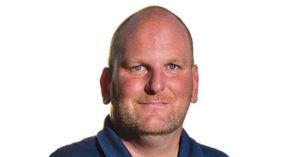Optimistic about the future of golf

Alan FitzGerald
I have several partially written articles for this column that I had to get over some writer’s block to finish, and then the COVID-19 shutdown arrived. The opportunist in me jumped on the bandwagon and wrote about the topic du jour.
The spring of 2020 will go down in history as the time that the world shut down. Decades from now, we will be telling our grandkids about the time the movie Contagion predicted the future and an invisible virus made everyone stay at home, wear face masks and created social distancing.
Throughout my career, a large percentage of my experience has been at newer clubs, with the one exception being the six seasons that I spent at Pine Valley in N.J. (I guess if you are going to work at an old club, you should do it right!) Working at newer clubs, the construction process and grow-ins really got me interested in golf course architecture from early on, along with the maintenance side of things.
The one big difference with an old club over a shiny new modern build was the history of the older clubs and how the course and the clubs themselves matured and survived over the decades. Working at Pine Valley not only reinforced what I had learned to love about architecture, but it also introduced me to what architectural perfection is — the design to which all others are compared.
While the overall layout has stayed the same, and although the club is very careful to protect its crown jewel, some design elements have been lost to time. There are numerous reasons why this happened, including making the course easier to maintain, helping the course battle the elements and the course simply maturing with time.
Realizing that a course and a club are constantly evolving, I started to wonder how economic and societal changes in the greater world had their effect on maintenance and clubs in general. Pine Valley is easy to reference here due to my firsthand experience, but this applies to every “Golden Era” club. From this, I have found it extremely interesting how clubs and courses evolved and how they survived to be what they are today.
I have frequently wondered how people/society and therefore clubs survived major national and world events like the Great Depression and World Wars. Like most of us, prior to March 2020, I couldn’t comprehend what one of these huge events would be like and how it would or could impact a modern world, one that seemed immune to a major crisis that shut down normal life. Yet, here we are. My curiosity has become a reality. I now know how a major worldwide crisis affects the planet and how, as humans, we adapt and make it work.
Thankfully, it is not like sheltering in the Tube dodging bombs and eating rations like in WWII-era London. Our suffering is having to stay in the comfort of our home with the added benefit of having Tiger King to keep us occupied rather than a scratchy wireless, but it’s a strange new world that we have been thrust into.
What does the future hold? I am hoping that by the time you are reading this, we will be back on the road to recovery. I think that like all of these periods in the past, there will be trepidation at first until we get used to the new normal, and then it will be business as usual. Like the original Lido on Long Island, the greatest golf course that no longer exists due to the Great Depression and WWII, there will be casualties, but golf will recover — maybe even grow if people realize they can easily play the sport while social distancing — and the clubs that survive will be stronger. COVID-19 will be a blip in their history, just like those periods in the past. I’m an optimist, but why should this time be any different — except now, we wonder if Carole Baskin did it?











